| Photojournal
- 10 December
2005
Red-tail
on a wire
|
A little before noon
on Saturday I headed towards Iona Beach with my camera; I hadn't
had taken it out since the end of November. A few days prior,
a fellow named Rob had reported, amongst other things, a Swamp
Sparrow out at Iona. Since I'd never seen a Swamp Sparrow, I hoped
it would still be around and that I'd be able to find it.
It turns out that my
best subject of the day appeared to me before I even got to Iona.
I was driving past the turnoff to MacDonald Beach when I saw a
buteo on a power line beside the road. I drove past, but quickly
looked for a spot to turn around. Coming back the other way, I
pulled off to the side of the road, powered down my car window,
and took photographs from my seat.
The buteo was a Red-tailed
Hawk, of the western light-morph kind. He didn't seem to mind
my taking photos (although he would certainly mind if I had gotten
out of the car to do it) and so I got a gob of good shots.
|
|
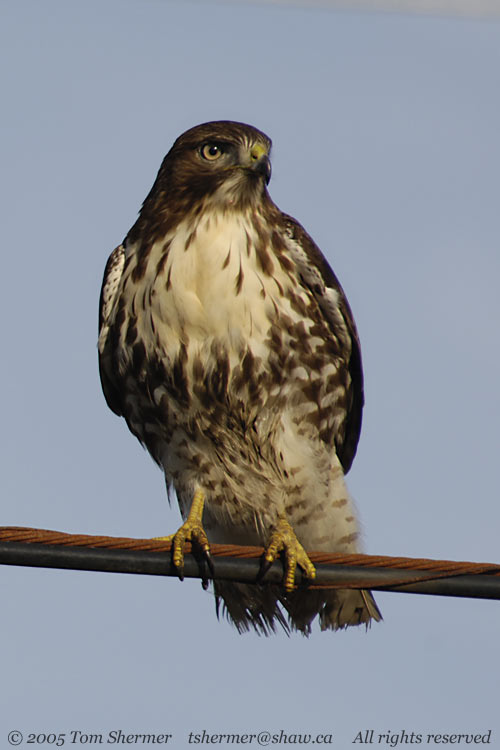 |
| Normally,
these guys'll fly away if you get this close to them, in the car
or not, so I was pretty happy about this opportunity. He was there
long enough for me to get over 100 shots. I was even able to turn
off the car (less vibration for me) without him leaving. Check out
how tattered the end of his tail is. |
|
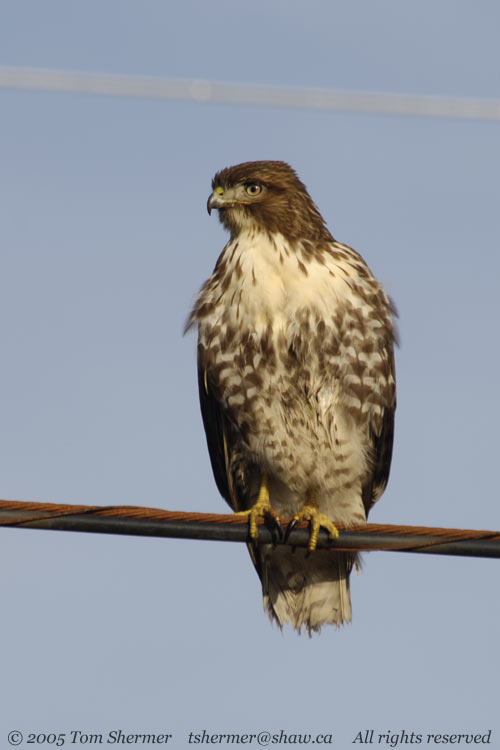 |
| Here's a
full-sized detail of that previous shot. |
|
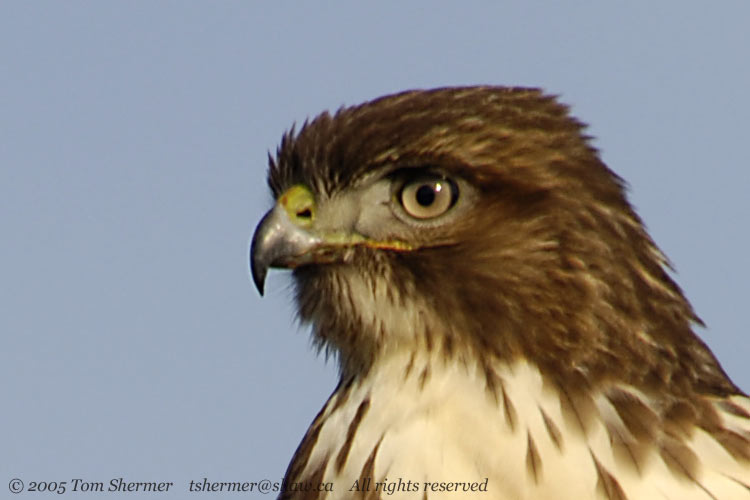 |
| Eventually,
the hawk flew up to a nearby pole, and I headed on the short distance
to Iona. Once there, I went to the outer ponds, because that is
where I remembered the sparrow to be. In the north pond, I saw a
type of duck that I haven't seen in a while...a Gadwall. |
|
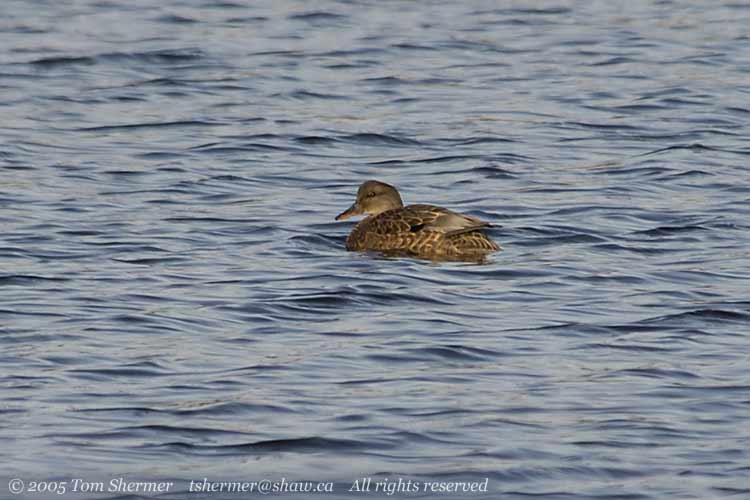 |
|
It was a little irritating,
because I was having some little memory block, and I couldn't
remember the name "Gadwall". I knew the type of duck;
it's quite distinct. The name just eluded me for about ten minutes.
Maybe I should take
my field guide into the field with me sometimes.
About the time that
I remembered "Gadwall", I was at a big berry bramble
near the fence around the inner ponds. I had seen a small bird
low in the bramble, and had started pishing, or making
little sounds that are supposed to attract the birds.
My low-in-the-berries
bird never came back out, but a Fox Sparrow flew out from behind
me, landed about two meters in front of me, and started to call.
|
|
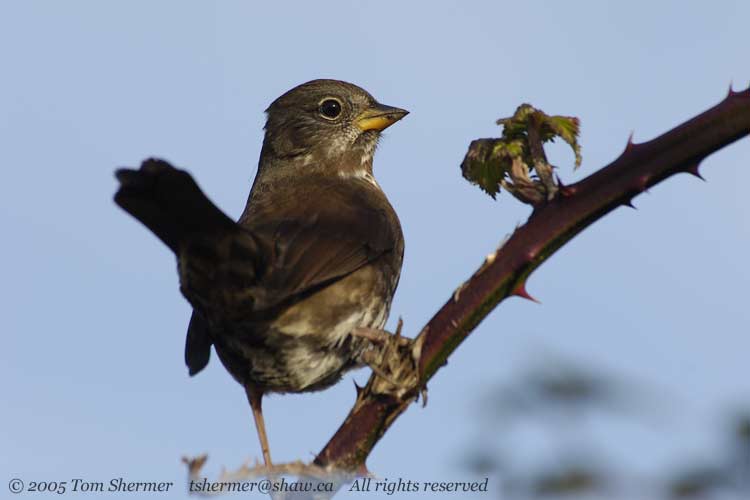 |
| I got a
few nice close shots of him. He wasn't shy at all. |
|
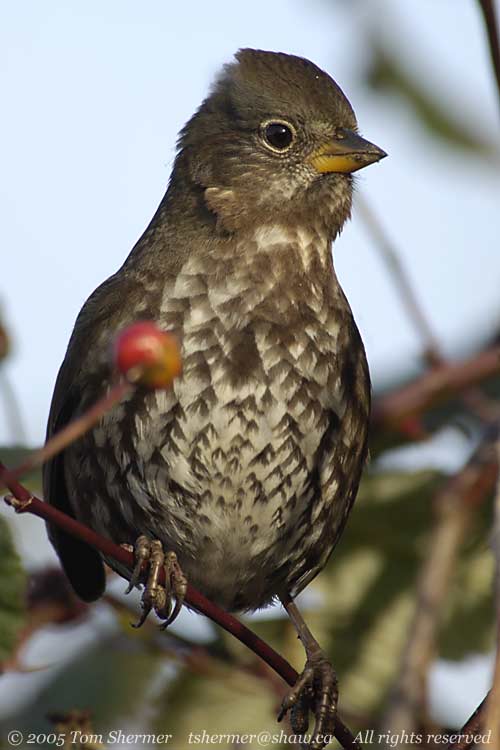 |
| With the
other bird not reappearing, I decided to head on back towards my
car. On the way, I saw an orange-billed, green-eyed, flying purple
fishie eater fly in and land in the north pond. |
|
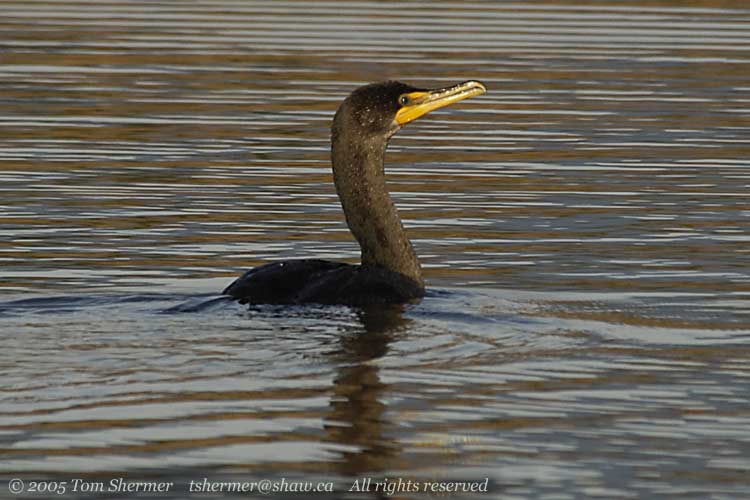 |
|
Most people just call
them Double-crested Cormorants, though.
When I got back to
the parking lot, I decided to check the south pond, and there
were more ducks there that I hadn't seen lately.
This one is a female
Greater Scaup.
|
|
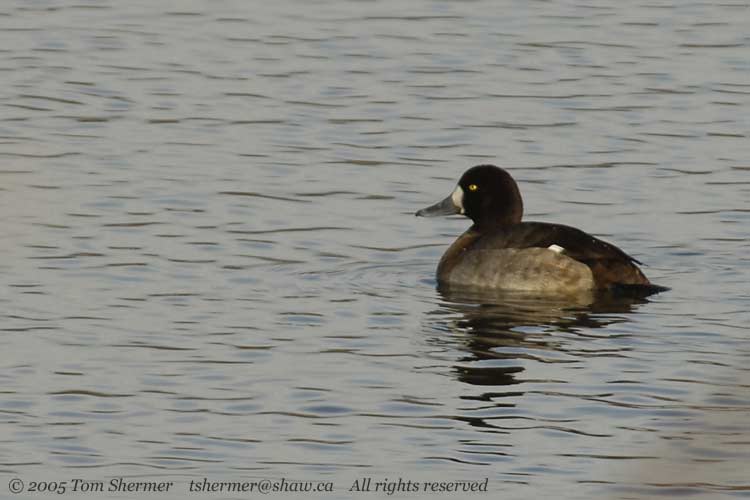 |
| And here,
behind a few more female scaups, is a male Canvasback. Despite thinking
that they're evil, I like Canvasbacks...they're a pretty duck. |
|
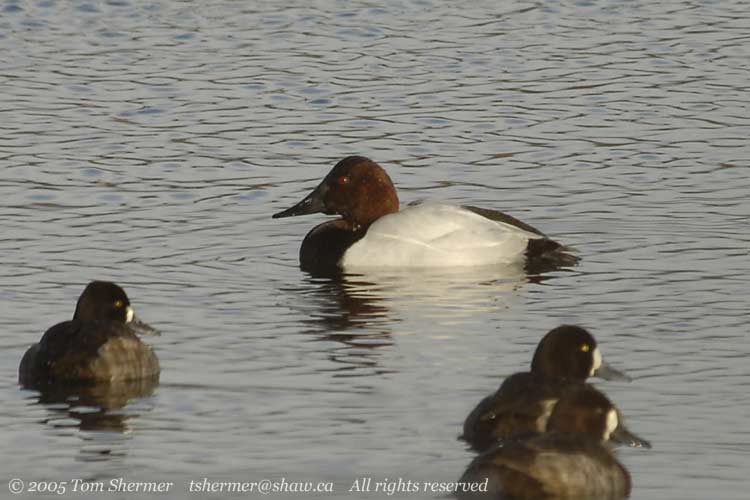 |
| This fellow
is a male Greater Scaup. Scaup and Canvasbacks are closely related;
they're both in the genus Aythya. |
|
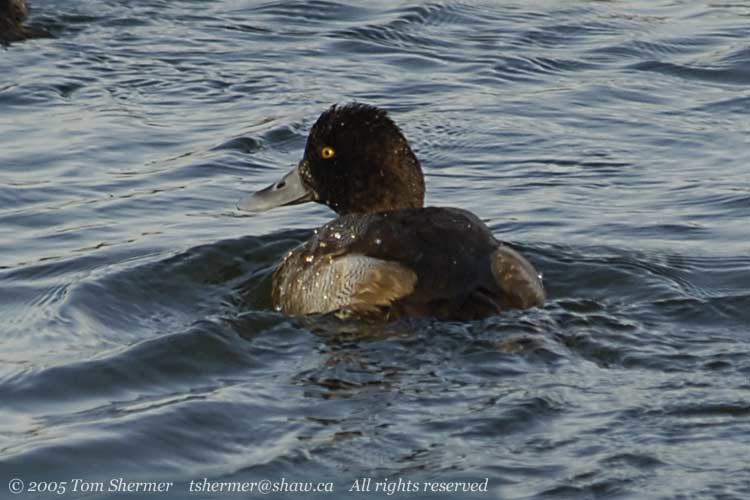 |
| Here's a
little line of relatives: from the front, a male Canvasback, a juvenile
Greater Scaup, a female Canvasback, and a male Greater Scaup (gazing
skyward, as scaup are wont to do). |
|
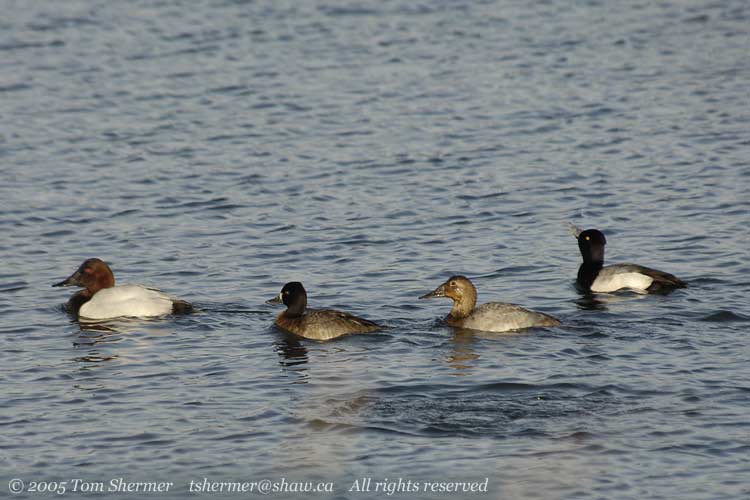 |
| Another
member of the genus Aythya is the Ring-necked Duck. There
were a flotilla of Ring-neckeds out there, too. Most of them were
male, but the second one (first in the big bunch) is female. |
|
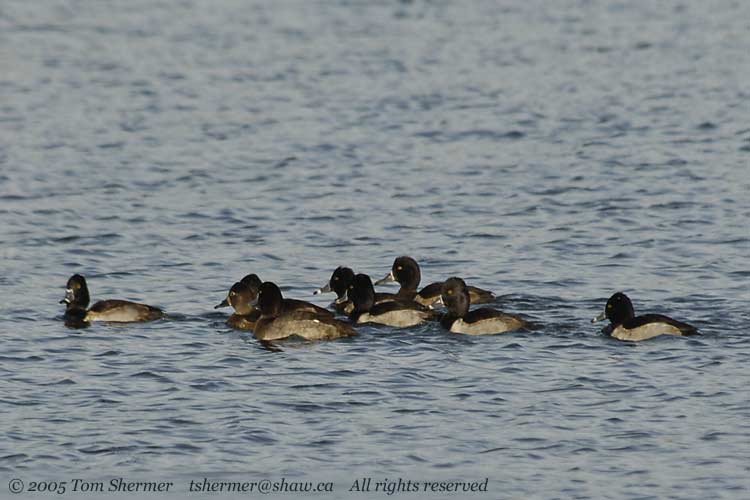 |
|
I tried a few times
to get better shots of the Ring-necked ducks, but each time I
mounted the little berm around the pond, the ducks would turn
tail and paddle away. I tried lying on the berm for a while, but
the ducks were already far away and didn't deign to come back.
So, tiring of lying
on wet grass, I decided to head over to the inner ponds. I got
in my car and drove back to the birder's entrance door. There
was only one car there; when I had gone by before there were three
or four.
I went on in and found
a small flock of Canada Geese right inside. I was a little surprised
to notice what looked like a leucistic one. I don't think that
this is my friend Lulu—that would be a big coincidence as
she normally hangs out quite far away. Besides, Lulu is a bit
darker than this goose.
|
|
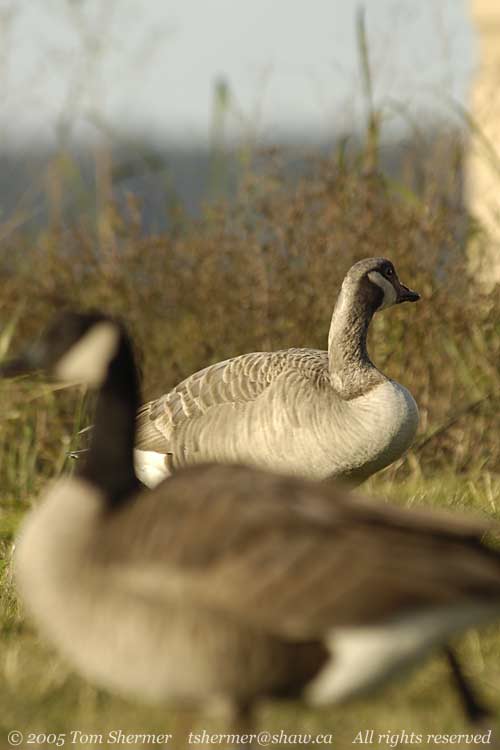 |
|
I only took three photos
of the goose, and didn't end up with any good ones.
I got distracted because
a birder I'd met once or twice before, Brian, was coming back
towards the gate. It had been Brian's car outside, and he was
coming back to drop his telescope before heading back in. I talked
with him and it turns out that I had been wrong about the reported
location of the Swamp Sparrow; it had been seen here at the inner
ponds.
As Brian went back
to his car, I trooped on and took photos of some more ducks that
were in the first pond. This is a group of Northern Shovelers,
all with their big ol' bills down in the water, suckin' up food.
|
|
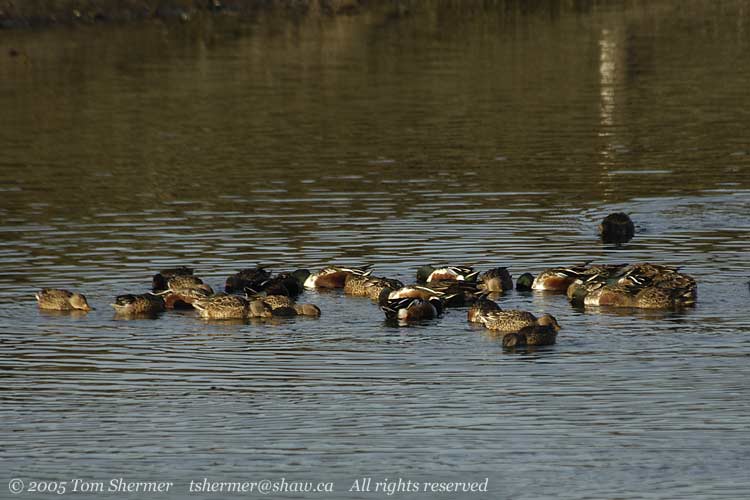 |
| One of the
few bird calls that I can hear and recognize is the American Wigeon's
rubber-ducky sound. So I actually heard and recognized these two
before I saw them. |
|
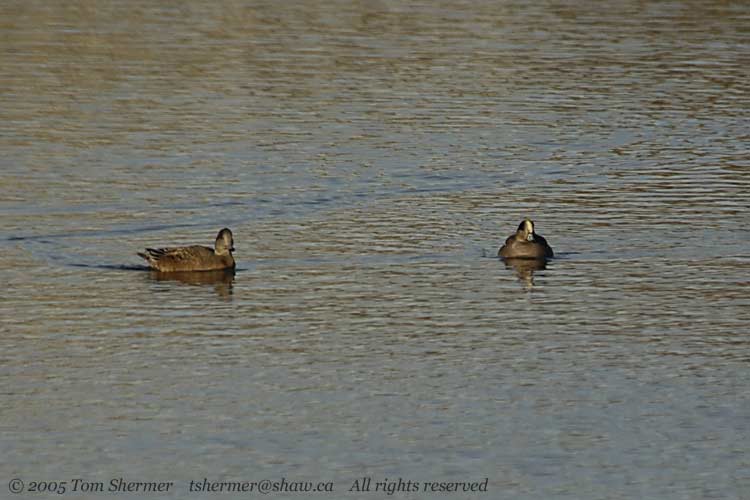 |
| Around the
pond were a number of Northern Pintails. There were only a few of
them floating around in the pond, though. Here's one, a female. |
|
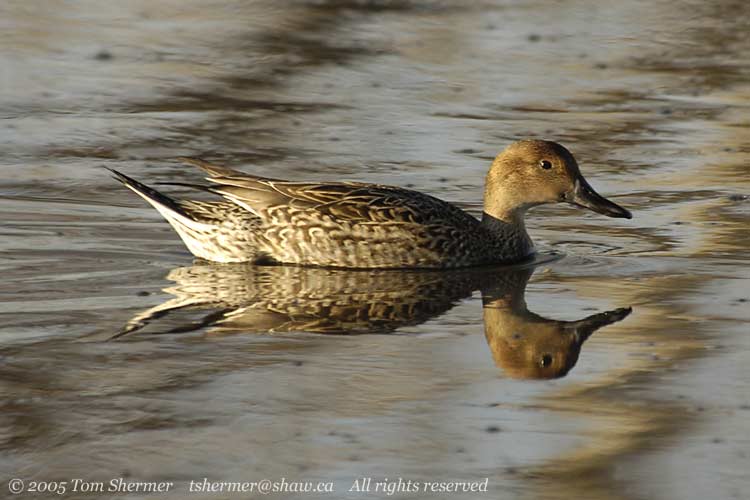 |
|
Pintails are one of
my favorite female ducks. I like the golden color of their head
and the sharp point of their tail.
There was a male on
the pond too, a bit further away.
|
|
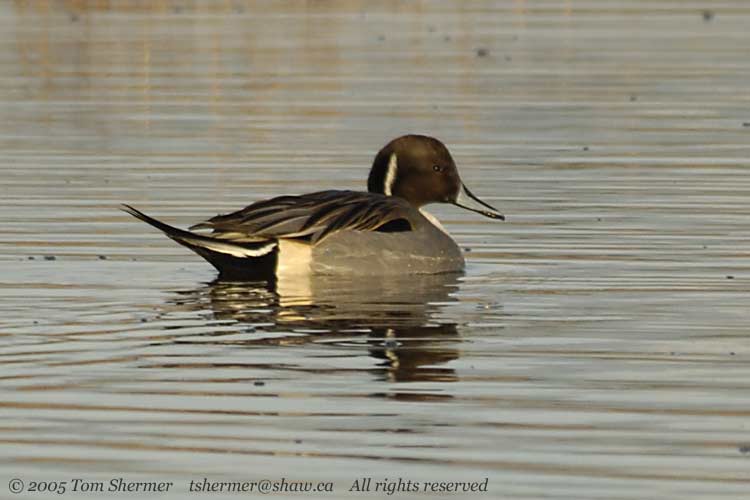 |
|
Around this point,
I was rejoined by Brian and we searched for the Swamp Sparrow
for maybe half an hour. At that point, another birder, Wayne,
arrived. He told us exactly where the bird had been reported (and
he should know, he's currently running the phone-in bird-report
service in town). The three of us searched there for another half-hour
or so, but with the light starting to fade, we slowly made our
way back to the exit. There was no Swamp Sparrow for us that day.
It had been great to
get back out in the field, though: the weather had been gorgeous,
I'd seen some variety, and some birds had been very photo-friendly.
I wasn't at all disappointed about the Swamp Sparrow; I knew it
was a long shot. Swamps are some of the most elusive and reclusive
sparrows we've got.
Finally clicking in
December,
Tom
|
|
|